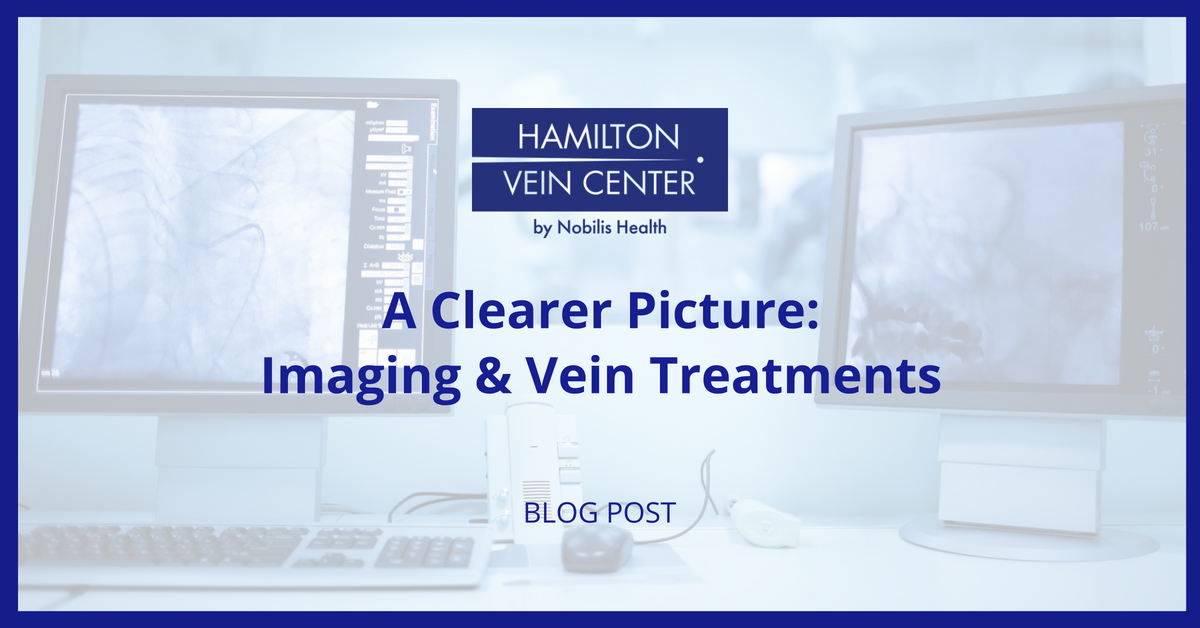A Clearer Picture: Imaging & Vein Treatments

Dialing In Diagnosis
As with any medical issue, proper diagnosis is essential for proper treatment of vein and vascular problems. The doctor needs to know as much as possible about what’s going on so that he or she can figure out the appropriate course of treatment. And while there are plenty of physical symptoms and outwards signs of conditions like varicose veins, venous insufficiency, or deep vein thrombosis (DVT), only by looking inside can the true scope of the problem be assessed.
Diagnostic imaging is the way to go. There are two main types employed for vein issues: venous ultrasound and venography. Let’s take a closer look at how these work and what they’re like.
Venography
When most people think of medical imaging, they think of x-rays. Venography is a specialized form of x-ray that allows for careful examination of diseased or damaged veins. It’s used in the diagnosis of a wide range of conditions and allows doctors to get a real sense of blood flow within the body. Let’s take a closer look:
- What It Detects: Venography is primarily used to seek out blood clots (as in DVT), assess varicose veins, as well as aiding in coronary bypass and dialysis access.
- How It Works: A special iodine-based dye is first injected into the affected area via catheter. This allows the flow of blood to more easily visualized when the low-radiation x-rays are emitted.
- Advantages: X-ray technology is the oldest, most long-running form of medical imaging. This means that it’s undergone numerous advancements and improvements and serves as a benchmark in diagnosis.
- What It’s Like: Venography, like all x-rays, does rely on emitting radioactive waves. While the time of exposure is so short that they aren’t dangerous, you’ll want inform the doctor if you’re pregnant, have other health conditions, or allergies. The procedure does involve the use of a catheter to inject dye, but it’s well-tolerated.
Clearly, this approach has a place in the treatment of vein problems, and it’s no wonder that it’s a standard and popular means of imaging.
Venous Ultrasound
If you’re like most, you associate ultrasound with pregnancy; it’s the way that obstetricians and expectant parents can take a look at the fetus. But of course, this technology has many applications, and it’s a standard imaging approach for vein and vascular problems. Here’s a quick rundown of how this technology works and what it does:
- What It Detects: Ultrasounds are most often used to detect the presence of DVT or blood clots within the veins. It can also aid in assessing the causes of leg-swelling and is sometimes used to help guide the placement of catheters during treatment.
- How It Works: This technology works by directing special, high-frequency sound waves to the affected area. A special gel is spread over the skin, the waves are emitted, and a specialized transducer collects the reflected signals. A computer is used to assemble the signals to create a workable image of the area.
- Advantages: Unlike other imaging techniques like x-rays, venous ultrasound signals emit no radiation. Furthermore, this technology is able to provide a real-time sense of motion and activity in veins, allowing doctors to assess blood flow.
- What It’s Like: Venous ultrasound is a completely painless, well-tolerated procedure. It’s safe and there are no side-effects. Clothing and jewelry in the affected area will most likely need to be removed.
This technology has seen increased use in the diagnosis of venous disorders, and, as it continues to be refined and improved, you can bet that it’s going to play a part in treatment for years to come.
Visualizing Better Outcomes
If doctors recommend venography or venous ultrasound, don’t be afraid to ask them questions about it. You have to feel comfortable and assured that these procedures are necessary and will help.
Like anything, the first step in solving a health problem involves understanding it fully. For vein health, imaging—alongside other diagnostic techniques—is essential in allowing doctors to figure out the best means of treatment and the scope of the problem. It’s a set of “eyes” on the ground: a tool that’ll help ensure the best possible resolution to the problem.
If you’re curious about vein treatments or are suffering from venous diseases or disorders, talk to a Patient Care Manager at Hamilton Vein Center. They’ll put you in touch with a dedicated team of experts, who employ the latest and best in treatment for their patients. Learn more about what they do at these Texas-based clinics by calling their Houston office at (281) 565-0033, the Austin location at (512) 551-1403, or San Antonio (210) 504-4304 today!